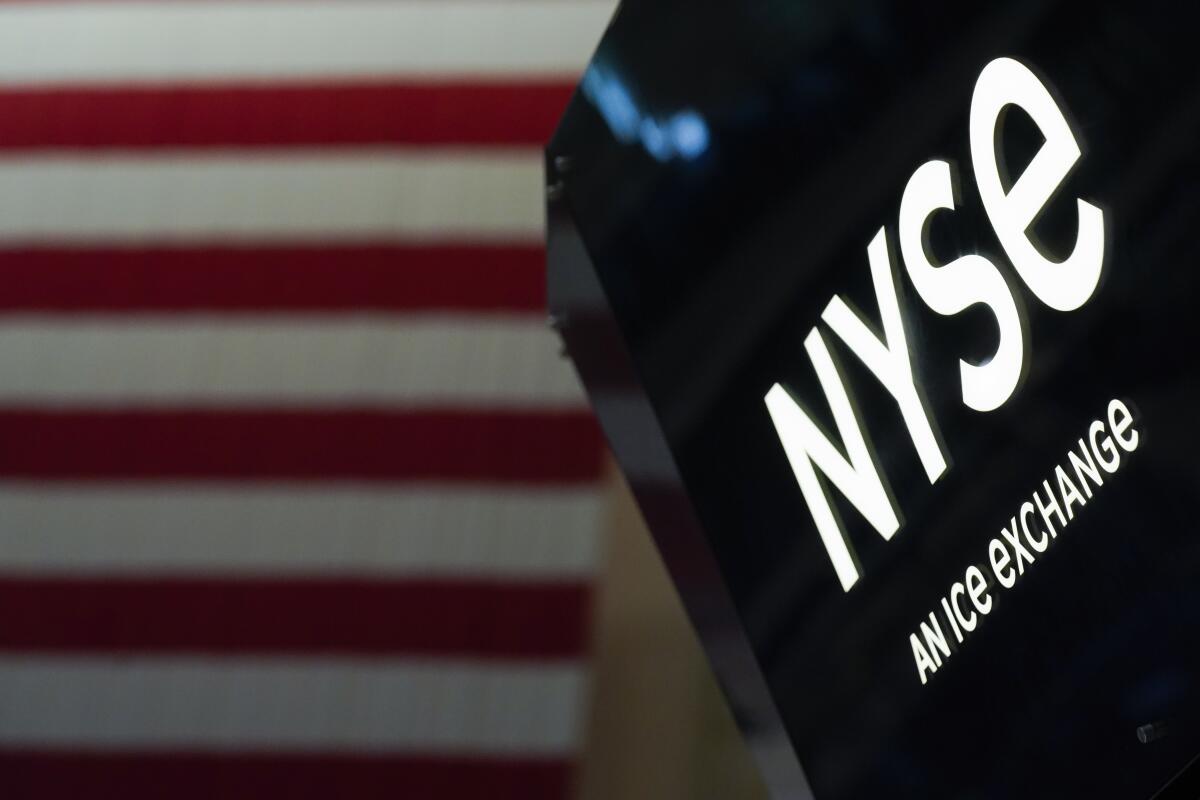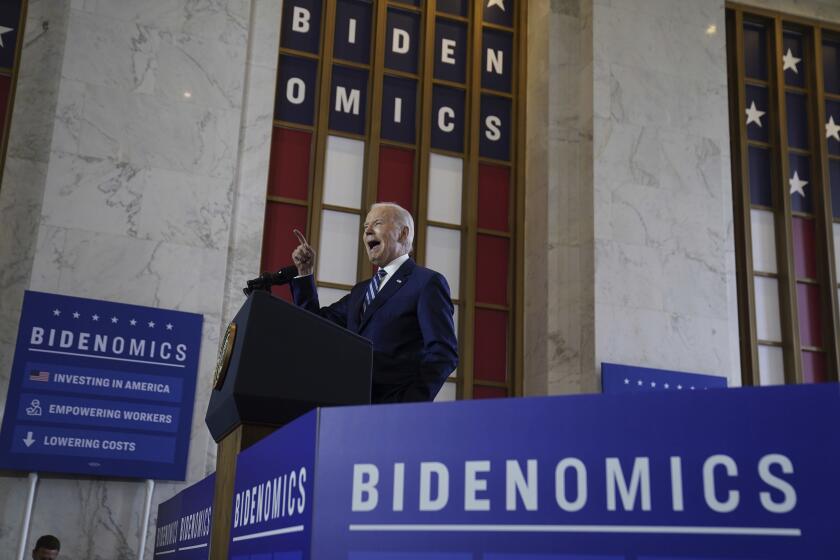Another rally sends Wall Street nearly 16% higher for the first half of the year

- Share via
Wall Street blazed to another rally Friday to close a winning week, month and first half of the year after reports suggested pressure on inflation may be easing.
The Standard & Poor’s 500 climbed 1.2% to reach its highest level since April 2022. The Dow Jones industrial average rose 285 points, or 0.8%, while the Nasdaq composite jumped 1.4%.
The market has cruised through 2023 in part because the economy has been able to defy many predictions for it to fall into a recession, at least so far. The job market in particular has remained resilient despite high interest rates implemented to slow the economy in hopes of dragging down inflation. That has helped companies keep profits from falling as much as feared.
“Just think back to the beginning of the year: There was more pessimism both on the economic and corporate fronts,” said Lisa Erickson, head of the public markets group at U.S. Bank Wealth Management. “And we’ve just seen, on both fronts, outperformance.”
Not only that, Wall Street hopes inflation is cooling enough for the Federal Reserve to soon halt its interest rate increases. That would mean less added pressure for the economy and financial markets.
A report on Friday showed the measure of inflation that the Fed prefers to use eased in May. It also said growth in spending by consumers slowed by more than expected. If fewer dollars are chasing after purchases, that could remove some pressure on inflation.
“There’s lots of noise around the edges, but tepid consumption growth and a downward trend for inflation means the end is near for rate hikes,” said Brian Jacobsen, chief economist at Annex Wealth Management.
Showing surprising resilience in the face of higher interest rates, the U.S. economy grew at a 2% annual pace from January through March as consumers spent at the fastest pace in nearly two years.
The Fed has already raised rates by a mammoth 5 percentage points from virtually zero early last year. Traders on Wall Street pared back bets that the Fed may hike interest rates twice again this year, with the majority betting on only one more increase, according to data from CME Group.
Yields in the bond market turned lower immediately after the release of the economic data. The 10-year Treasury yield fell to 3.82% from nearly 3.87% just before the report’s release. It helps set rates for mortgages and other important loans.
The two-year Treasury yield, which moves more on expectations for the Fed, slipped to 4.88% from 4.90% just before the report’s release.
A separate report from the University of Michigan said sentiment among consumers is improving, but their expectations for inflation aren’t rising. That could also make for an easier Fed. The central bank has said it wants to avoid a vicious cycle in which expectations for high inflation drive behavior that only worsens inflation.
Easier interest rates help prices for all kinds of investments. But technology and other high-growth stocks tend to be seen as some of the biggest winners, and they helped to lead the market.
Nvidia rose 3.7%, for example. It’s been among a small cadre of stocks that have exploded higher this year amid a frenzy about artificial intelligence software. It’s up 189.5% for the year so far.
Biden delivered a major speech in Chicago as part of a White House push to take credit for the economy’s post-pandemic recovery.
Apple climbed 2.3% to become the first U.S. stock to end a day with a total market value of more than $3 trillion.
Cruise line operators also helped drive the rally. Carnival led all stocks in the S&P 500 with a 9.7% gain, while Norwegian Cruise Line climbed 4.2%. Travel stocks have been hot recently on expectations for strong demand as vacationers head back out.
On the losing end of Wall Street was Nike. It fell 2.6% after reporting weaker profit for the latest quarter than expected, though its revenue topped forecasts.
One criticism of the stock market’s rally this year has been how much of it was due to just a handful of big technology stocks. Gains recently have broadened a little, and the market’s smallest stocks rose 0.4%, as measured by the Russell 2000 index.
Stocks are generally more expensive than they’ve been historically, relative to their profits, but they still look “in the zone of OK,” said U.S. Bank’s Erickson. She is suggesting investors stick to a “neutral” approach, not bulking up any more than usual on stocks versus bonds but also not abandoning them.
All told, the S&P 500 rose 53.94 points to 4,450.38. The Dow advanced 285.18 points to 34,407.60, and the Nasdaq climbed 196.59 points to 13,787.92.
The S&P 500 closed out its sixth winning week in its last seven and its best month since October. The index‘s gain of 15.9% through the first six months of the year is better than it’s done in 16 of the last 23 full years.
Overseas, one of the world’s best stock markets this year took a breather after Japan’s Nikkei 225 slipped 0.1%. It still rose 27.2% in the first six months of 2023.
The U.S. stock market will be open a half-day on Monday and closed Tuesday for the Independence Day holiday.
AP writers Matt Ott, Elaine Kurtenbach and Alex Veiga contributed to this report.
More to Read
Inside the business of entertainment
The Wide Shot brings you news, analysis and insights on everything from streaming wars to production — and what it all means for the future.
You may occasionally receive promotional content from the Los Angeles Times.












